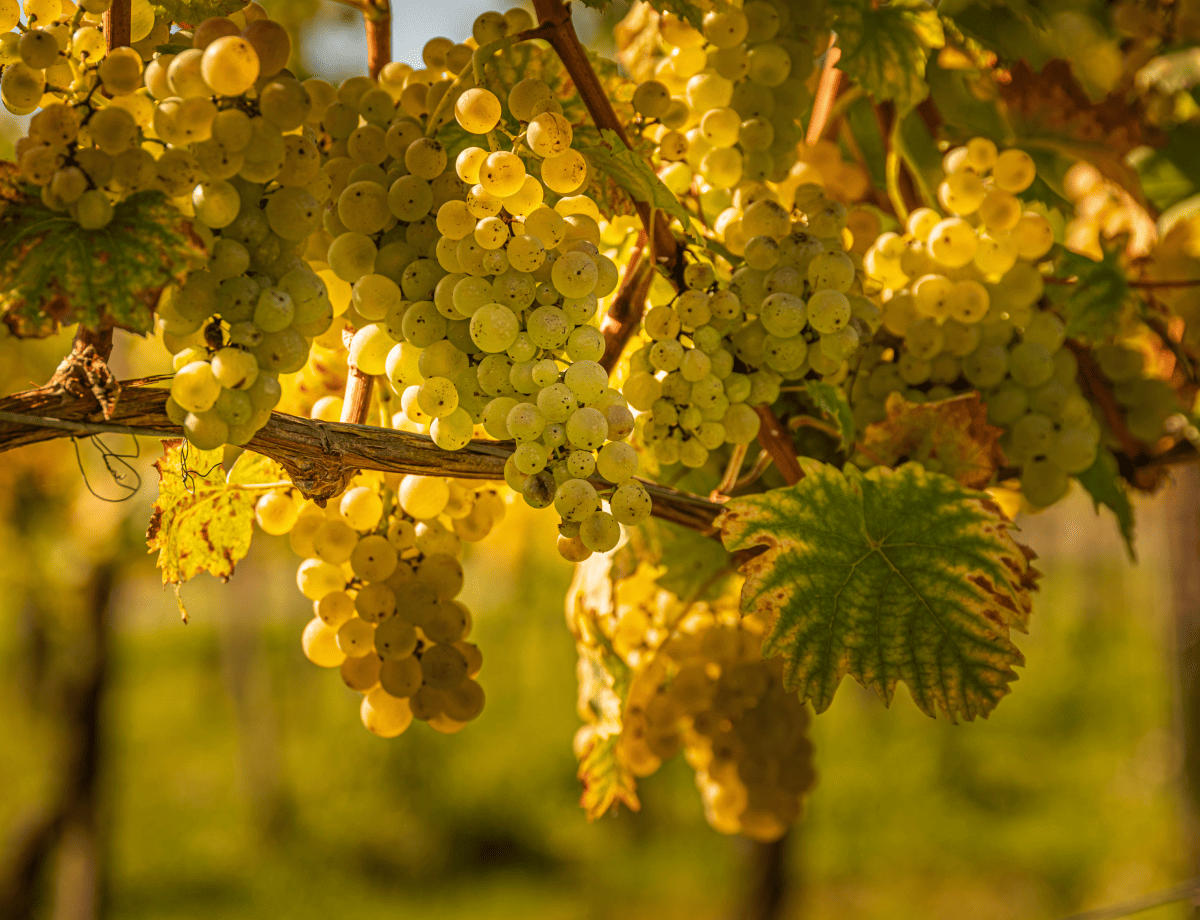🎁 Buy 6 Bottles, Get 6 FREE
Ice Wine Grapes

Ice wine can be produced from a range of red and white grape varieties, though Riesling and Vidal are the most commonly used for white ice wine, while Cabernet Franc is a popular option for red. Other varieties that may be used include Gewürztraminer, Chenin Blanc, Chardonnay, and Merlot. The essential factor is that the grapes stay on the vine and freeze naturally, allowing for a concentrated, sweet juice to be extracted during pressing.
Ice wine, or “Eiswein,” is a special treat made with frozen grapes. These grapes are left to freeze on the vine before being picked, creating a sweet and rich flavour. Not all grapes can handle the cold, though. They need to keep their acidity and sugar levels to make ice wine’s unique taste.
Curious about which grapes are best for ice wine? This guide covers everything you need to know—from popular whites like Riesling to rare reds like Cabernet Franc, plus how different regions affect their flavours.
Why Certain Grapes Are Ideal for Ice Wine
Making ice wine requires very specific grapes that can handle tough conditions. Here’s what makes a grape suitable for this special type of wine:
- High Acidity: Grapes need to have naturally high acidity to keep the wine balanced. This helps prevent the wine from being overly sweet.
- Sugar Content: The grapes must have enough natural sugar to create the rich, concentrated sweetness that ice wine is famous for.
- Cold Tolerance: Ice wine grapes need to survive extremely cold temperatures, around -8°C (17.6°F) or colder, without going bad. Grapes with thick skins and vines that can handle cold weather work best in these conditions.
Ice Wine Grapes: White Varieties
Riesling
Riesling, often called the “king” of ice wine grapes, is loved for its bright acidity and rich flavors.
- It offers light floral, citrus, and green apple aromas with a fresh and sweet taste that’s perfectly balanced by its natural acidity.
- Riesling grows well in cold regions like Germany’s Mosel Valley, where ice wine, or Eiswein, first started. It’s also a popular choice in Canada’s Niagara region and Austria.
Vidal Blanc
This French-American hybrid grape is a favorite for making ice wine in Canada, especially in Ontario.
- Vidal Blanc has flavors of tropical fruits like pineapple and mango, with a bright acidity that balances its sweetness.
- Its thick skin and ability to handle very cold weather make it ideal for Canada’s freezing winters.
Gewürztraminer
If you enjoy bold and fragrant wines, Gewürztraminer brings a unique twist to ice wine.
- This wine has a strong, spicy aroma with flavours of lychee, rose petals, and candied ginger.
- Although less common in places like Germany or Canada, Gewürztraminer is loved by many for creating rich, flavourful ice wines.
Understanding the variety of ice wine grapes is just one piece of the puzzle. If you’re curious about how ice wine compares to regular wine, be sure to check out our article on ice wine vs regular wine.

Ice Wine Grapes: Red Varieties
Cabernet Franc
Cabernet Franc ice wine is a rare but delicious treat that shows red wines can thrive in cold climates.
- It has flavours of ripe red berries, blackberries, and a hint of jam. The wine’s acidity balances its sweetness, making it easy to enjoy.
- This variety has become popular in Canada, especially in areas like British Columbia and Niagara, where the cool weather is perfect for making ice wine.
Merlot
While uncommon, Merlot-based ice wines offer a rich and velvety texture.
- Merlot ice wine has flavours of dark fruits like black cherries and plums, with a smooth and balanced taste. It’s less acidic compared to other types of ice wine but still very enjoyable.
- Although it’s not as common, some producers in Canada and Austria have made excellent Merlot ice wines that are highly praised.
Regional Variations
Germany
Germany is where Eiswein, or ice wine, was first created. The country mainly uses Riesling grapes to make this special wine. With its cold winters and long history of winemaking, Germany is known for producing some of the best traditional ice wines. German Eiswein is known for its crisp acidity and flavours of stone fruits and citrus.
Canada
Canada is known around the world for making some of the best ice wine, especially from the Vidal Blanc grape. This grape grows well in Canada’s cold winters, especially in regions like Ontario and British Columbia. Canadian winemakers also use other grapes like Riesling and even red grapes like Cabernet Franc to create a variety of ice wines.
Austria
Austria takes a unique approach to ice wine, often using Grüner Veltliner and other local grape varieties. Grüner Veltliner adds herbal and spicy flavours, offering a different experience compared to the sweeter, fruitier styles found in Canada and Germany.
Moldova
Moldovan winemakers experiment with different grape varieties, including Cabernet Sauvignon and local types. One standout is the Cabernet Sauvignon Rosé ice wine, which combines bright acidity with flavours of red berries for a refreshing and complex taste.
Flavour Profiles
How do grapes influence the unique experience of drinking ice wine?
- Riesling: Sweet and tangy, Riesling ice wine is a mix of apricot, green apple, and honey flavours. It’s great for those who enjoy wines that are refreshing yet sweet.
- Vidal Blanc: This wine is bursting with tropical fruit flavours and has a smooth acidity. It’s perfect for anyone who enjoys sweet wines with a bright, lively finish.
- Gewürztraminer: Bold and flavourful, this ice wine is spicy. It’s a great choice if you like rich, full-bodied wines with unique flavours.
- Cabernet Franc: Packed with juicy red fruit flavours and a touch of sweetness, this wine is a good option for red wine drinkers who want something sweeter but still balanced.
- Merlot: Smooth and velvety, Merlot ice wine has rich dark fruit flavours, making it a perfect choice for special moments.
The variety of grapes used to make ice wine shows how unique and exciting this drink can be. Riesling offers bright, zesty flavors, Vidal Blanc brings a sweet, tropical touch, and Cabernet Franc adds a smooth, elegant taste. A must-try for any wine lover!
Want to learn more about the origins and unique characteristics of ice wine? Discover what is ice wine and what makes it so special.
Ice Wine Grapes FAQ
Ice wine can be made from different types of grapes, each giving it unique flavours. Riesling grapes add bright, citrusy notes, while Vidal Blanc gives it sweet, tropical flavours. Cabernet Franc grapes bring smooth, elegant tastes. Other grapes like Merlot and Gewürztraminer are also used, adding richer and more exotiс flavours.


